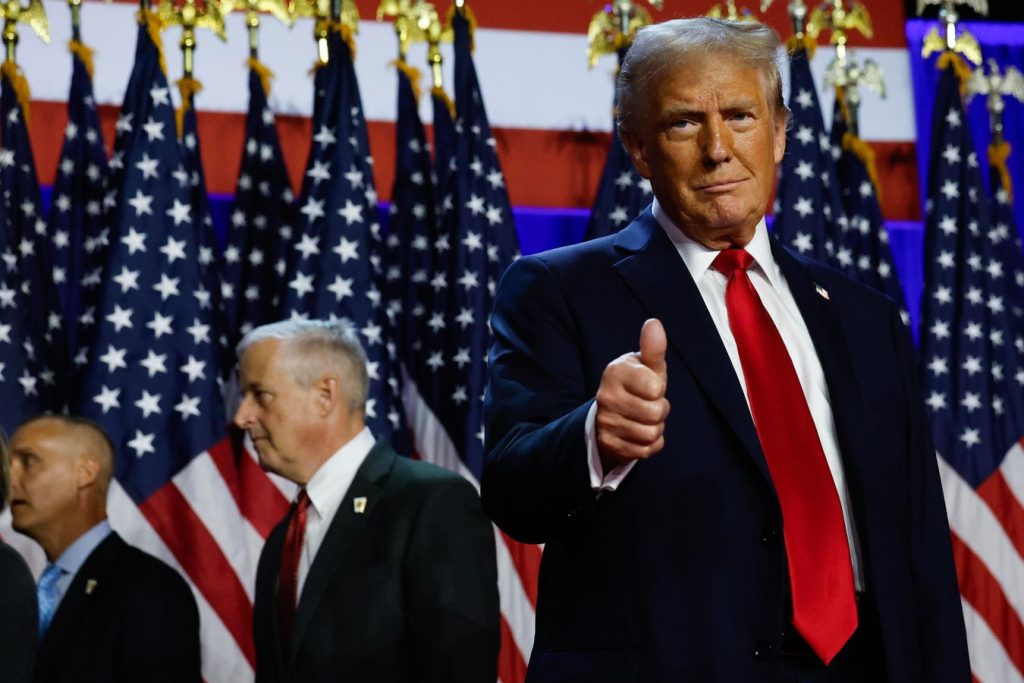The Looming Specter of Trump’s Trade Policies: A Deep Dive into Potential Impacts
Donald Trump’s return to the presidency in 2025 casts a long shadow over the global trade landscape. Experts anticipate a significant escalation of his protectionist policies, potentially triggering a new era of trade wars and economic upheaval. Trump’s first term saw the imposition of substantial tariffs on Chinese imports and goods like steel and aluminum, effectively doubling tariff revenues. His second-term agenda promises even more aggressive measures, including a 25% tariff on imports from Canada and Mexico, the US’s largest trading partners, and a further 10% tariff on Chinese goods. The proposed "reciprocal tariffs," mirroring those imposed on US exports by other countries, add another layer of complexity and potential disruption to international trade flows.
The inevitability of these tariffs is almost unquestioned, with the primary uncertainty revolving around their timing. Experts predict a rapid implementation, possibly within the first 100 days of Trump’s presidency, leveraging existing statutory authority or invoking the International Emergency Economic Powers Act. This swift action would leave little time for businesses to adjust, potentially magnifying the economic shockwaves. The consequences of these tariffs are expected to be far-reaching and detrimental, primarily impacting American consumers and businesses. Contrary to the misconception that exporting countries bear the brunt of tariffs, the cost ultimately falls on US companies—distributors, manufacturers, and retailers—who often pass it on to consumers through higher prices. This, in turn, fuels inflation and reduces consumer purchasing power.
The impact on businesses is equally significant. Absorbing tariff costs erodes profit margins, limiting funds available for crucial activities like expansion, research and development, and other corporate initiatives. This can stifle innovation and long-term growth. Beyond the direct financial burden, the ripple effects of these policies could trigger a global trade war. Other countries are unlikely to remain passive in the face of aggressive US tariffs, leading to retaliatory measures and a spiral of escalating trade barriers. This could isolate the US economy, undermining its global standing and hindering its access to international markets.
However, the impact on foreign direct investment (FDI) is more nuanced. Trade wars, while generally detrimental to trade flows, can generate both investment diversion and creation effects. On the one hand, they impede trade and encourage investment into highly protected markets as businesses seek to bypass trade barriers. This can lead to a shift in investment destinations, with companies relocating production to countries offering more favorable trade conditions. On the other hand, trade protectionism can redirect export-oriented FDI away from affected countries towards those maintaining stable trade relations with major export markets. This restructuring of FDI and global supply chains can stimulate investment in infrastructure and supplier networks in new locations.
The first "trade war" under Trump’s presidency showcased this dynamic, with export-oriented FDI diverting from China to Mexico and Southeast Asian countries. Simultaneously, Chinese firms engaged in outward FDI to overcome trade barriers. A second trade war under Trump is likely to intensify these trends, leading to a broader dispersion of export-driven and barrier-hopping FDI beyond Mexico and Asia. This reshaping of global investment flows could have profound implications for the long-term structure of the global economy.
While Trump’s trade policies are undeniably aggressive, they don’t entirely deviate from the broader trajectory of US policy or public sentiment. There is a growing bipartisan consensus on issues like China, the use of tariffs as policy tools, and the expanding executive power over trade. Both Democratic and Republican administrations have increasingly consolidated executive control over trade policy, utilizing tariffs to achieve national and economic security objectives. This trend reflects a growing public skepticism towards free trade, fueled by concerns about job losses and economic competition, particularly from China.
President Biden’s continuation of Trump-era tariffs and his de-prioritization of trade preference programs further underscores this shift in US trade policy. The use of trade as a weapon, and potentially as a revenue-raising tool, adds another layer of uncertainty. The incoming Trump administration inherits this complex landscape, with trade poised to remain a central focus and a source of potential economic and geopolitical turbulence. The long-term consequences of these policies remain to be seen, but their disruptive potential is undeniable.










